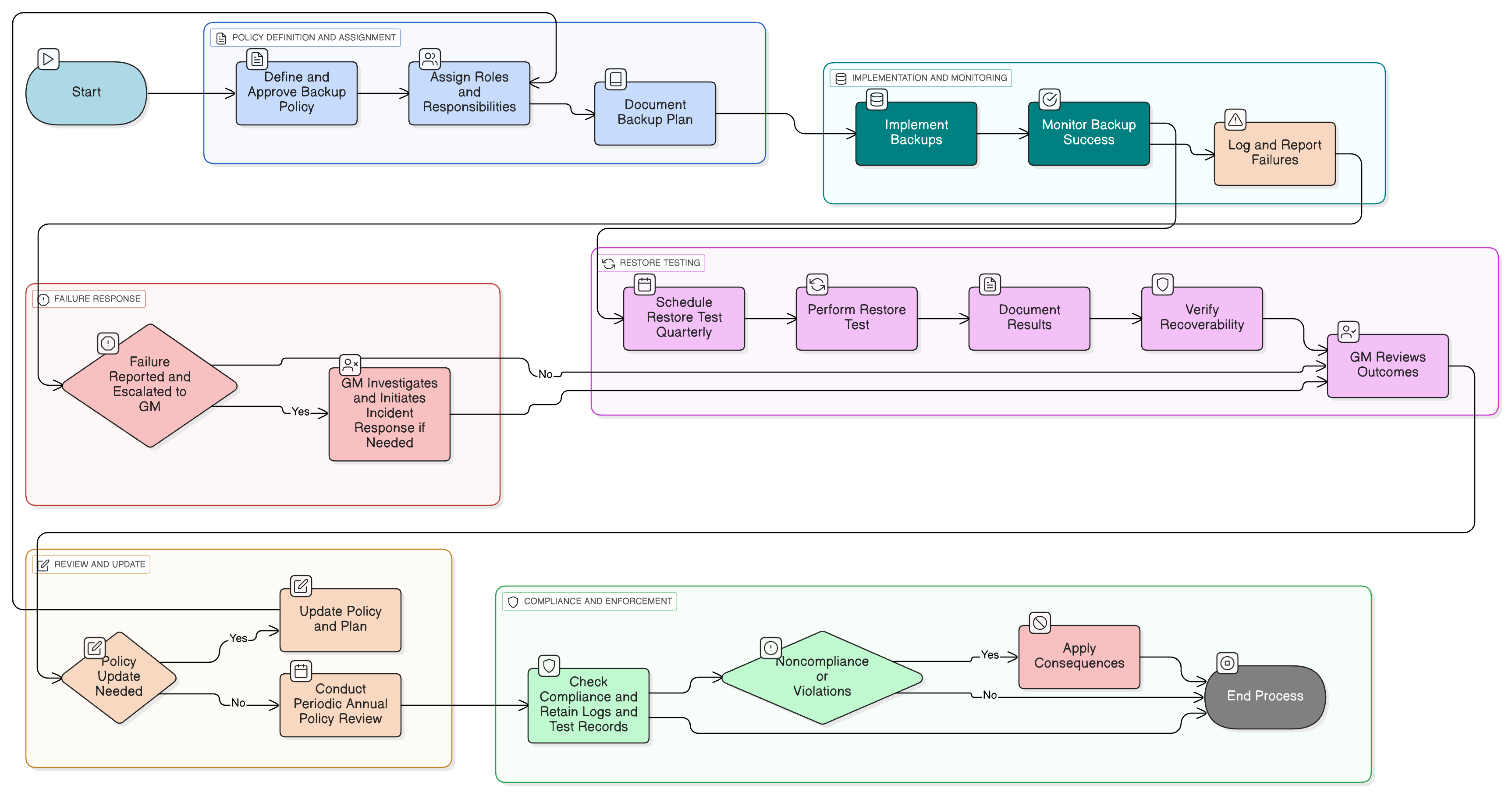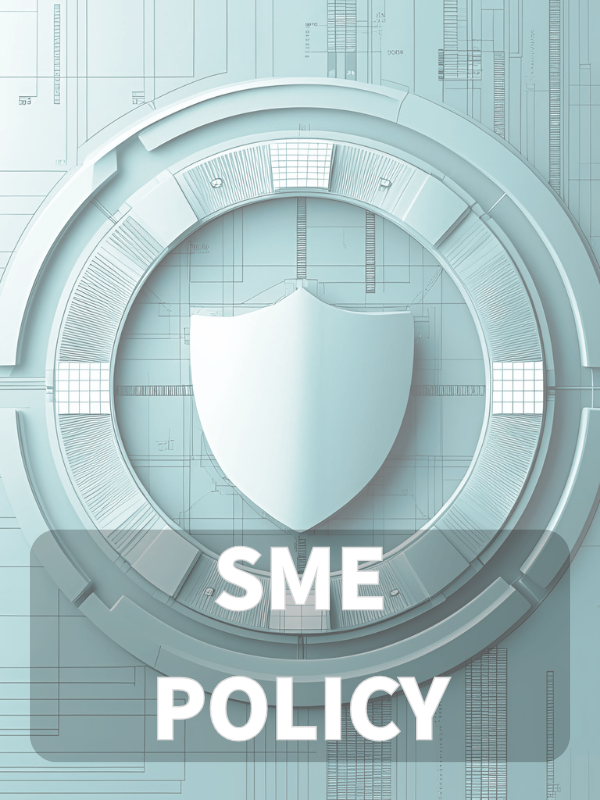Overview
This policy outlines clear rules and responsibilities for securely backing up and restoring data in an SME setting, ensuring business continuity, regulatory compliance, and effective risk management.
Business Continuity Ensured
Guarantees timely data recovery after incidents and protects against accidental loss or technical failure.
Adapted for SMEs
Designed for organizations without dedicated IT teams, detailing clear roles for General Managers and external IT support.
Regulatory Compliance
Supports ISO/IEC 27001, GDPR, EU NIS2, and DORA through structured and auditable backup procedures.
Read Full Overview
Policy Diagram

Click diagram to view full size
What's Inside
Scope and Rules for Backup Operations
Roles and Responsibilities (General Manager, IT Providers)
Backup Frequency and Retention Schedules
Storage, Encryption & Secure Deletion Requirements
Incident Response & Escalation Steps
Audit Readiness & Annual Review
Framework Compliance
🛡️ Supported Standards & Frameworks
This product is aligned with the following compliance frameworks, with detailed clause and control mappings.
| Framework | Covered Clauses / Controls |
|---|---|
| ISO/IEC 27001:2022 | |
| ISO/IEC 27002:2022 | |
| NIST SP 800-53 Rev.5 | |
| EU NIS2 | |
| EU DORA | |
| COBIT 2019 | |
| EU GDPR |
5(1)(f)32(1)(c)
|
Related Policies
Data Retention And Disposal Policy-SME
Defines how long backup data should be stored and securely deleted.
Data Classification And Labeling Policy-SME
Helps prioritize which data must be backed up based on classification levels.
Incident Response Policy-SME
Covers procedures if backups fail or if data recovery is required after a breach or outage.
Governance Roles And Responsibilities Policy-SME
Assigns clear authority for backup oversight and policy enforcement.
Data Protection And Privacy Policy-SME
Ensures backup handling of personal data aligns with legal and privacy regulations.
About Clarysec Policies - Backup and Restore Policy - SME
Generic security policies are often built for large corporations, leaving small businesses struggling to apply complex rules and undefined roles. This policy is different. Our SME policies are designed from the ground up for practical implementation in organizations without dedicated security teams. We assign responsibilities to the roles you actually have, like the General Manager and your IT Provider, not an army of specialists you don't. Every requirement is broken down into a uniquely numbered clause (e.g., 5.2.1, 5.2.2). This turns the policy into a clear, step-by-step checklist, making it easy to implement, audit, and customize without rewriting entire sections.
Restore Testing Is Mandatory
Quarterly restore tests are required and results must be documented, proving backup recoverability for audit and assurance.
Clear Delegation and Auditing
Policy enforces documented delegation of tasks to GM and IT, with annual reviews and logging to support accountability.
Frequently Asked Questions
Built for Leaders, By Leaders
This policy was authored by a security leader with 25+ years of experience deploying and auditing ISMS frameworks for global enterprises. It's designed not just to be a document, but a defensible framework that stands up to auditor scrutiny.
